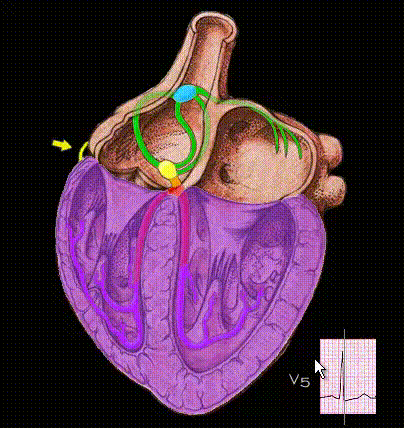
In this example, an AV nodal bypass tract (accessory pathway) exists between the right atrium and right ventricle, but the impulse does not pass through the acccessory pathway. The impulse conducts entirely through the AV node and the ventricles are activated normally. . The P wave, QRS complex and T wave are normal.
